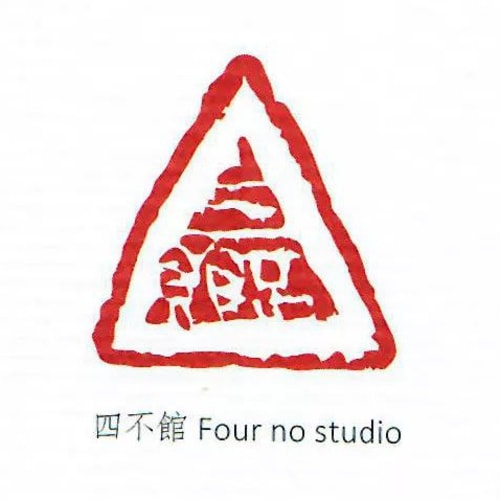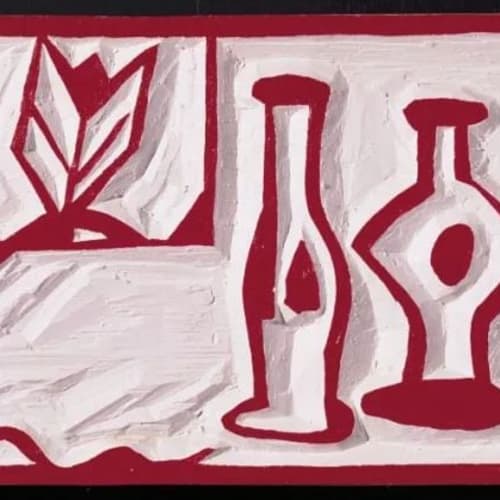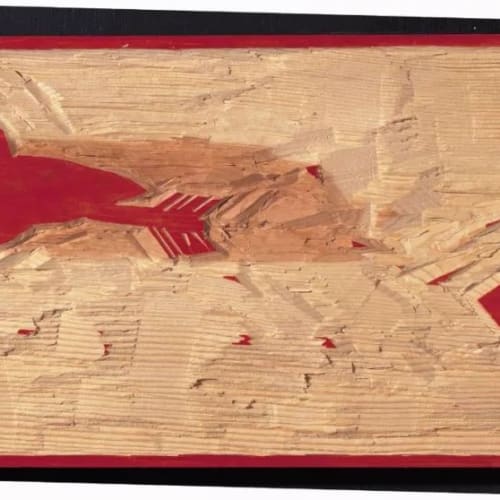Orignally published in the brochure for the exhibition Ming-Chip Fung : The Seal 1975-1985, New York
- Tumblr
Chinese seal carving is a special form of literary art which traditionally has served the dual function of decoration and identification of paintings and calligraphy.
The art of seal carving is closely related to that of calligraphy, as illustrated by the following shared characteristics:
Most seal designs, like calligraphy, are arrangements of Chinese characters. The characters used in seals form intelligible phrases or sentences. The artistic worth of a seal carving is evaluated in terms of the lines, composition and vitality of the entire work.
As with calligraphy, the formats and forms of seals have changed little over the past two thousand years.
While seal carving is an outgrowth of calligraphy, it possesses a number of characteristics that set it apart from that art form:
- Seals traditionally have been used in association with painting or calligraphic works, while a piece of calligraphy can stand by itself as an independent art form.
- Characters used in seals are for the most part limited to ancient styles. Works of calligraphy, in contrast, employ all of the different writing styles-regular, cursive, scribe, as well as seal script.
- Seals usually are executed in the shape of a square, rectangle (vertical or horizontal), ellipsis (vertical or horizontal), circle or an odd shape derived from the nature of the material on which the seal has been carved.
- The size of the seal ranges from one-quarter to five inches in width The various formats in which calligraphic works are presented are essentially the same as those of paintings: hanging scrolls, handscrolls, albums, four- or six-piece panels and fans.
- Characters carved on seals, in addition to having meaning, may be formed into pictorial designs which are not necessarily intended to be read. Calligraphy, by definition, must express a comprehensible thought or idea.
- The most distinctive difference between the two art forms is that seals are produced with a knife on stone, jade, ivory, wood or bamboo, while calligraphy is produced with brush and ink on paper or silk.
- As with all forms of Chinese art, the style and format of seal carving have been limited by ancient practices and tradition.
Now, Ming-Chip Fung has moved off in a direction of his own. A sensitive, thoughtful artist, Fung, with concentrated interest and intensive practice has attempted to create his own distinctive style and establish his own theories. Following the tradition of Qi Baishi (1864 – 1957), the artist whom he admires the most, Fung has learned almost everything he knows about the art of seal carving on his own. The first step in his departure from the past was his decision not to follow the Qin and Han styles, which are the standardized models for almost all seal carvers. From there he proceeded to study ancient characters and to practice carving them, guided only by his own instincts and feelings.
Three examples of Fung’s work illustrate clearly the ways in which he has combined creativity and understanding of traditional styles to break away from the past and produce entirely new forms.
Plate 1, My Own. The wide border lines used in this seal are frequently found in traditional formats. The stylistic innovation is represented by the composition of the characters within the border and the tendency of the characters to break through the inner lines of the border.
Plate 2, Have My Own Style. The artist has followed an ancient practice in dropping out the characters in white on solid red background. He has succeeded in giving an entirely new look to the seal, however, by also reversing in the white the wide border and adding a fine red line around the outside of the seal.
Plate 3, Four No Studio. As noted earlier, seals often followed the natural contours of the materials in which they were carved. The odd shapes of Fung’s works, however, were intentionally created by the use of geometric designs, such as triangles, or by allowing the characters to extend through and beyond the border.
The meaning of the characters carved on seals can usually be deciphered by people who are trained in reading seal script.
Since the style of many of these characters are not standardized and the structure of the characters is sometimes altered, for the sake of composition, there are cases in which even the most experienced scholar has difficulty identifying the characters. The appreciation and enjoyment of the aesthetic quality of a seal’s carving is therefore not always dependent on the ability to read it. Understanding this, and in the pursuit of good composition, Fung has created seals using characters that do not form a meaningful expression. He even uses structures that are not legitimate characters but character look-alikes, none of which, of course, are meant to be read.
The most revolutionary idea that Fung has introduced to seal carving is to make it an art form independent of painting and calligraphy. His large seal boards, painted in white and red and measuring up to 5 °— 7 feet, are hung as individual pieces of art. He contends in fact, that any seal imprint, large or small, can be framed as in independent work.
In the world of Chinese art, innovators are needed, especially in those fields that have been most tightly bound by traditional principles. For seal carving and calligraphy, the time has come to emancipate these art forms.









